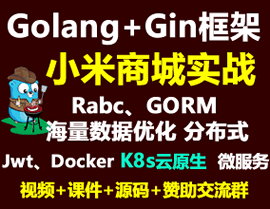Nestjs中使用模板引擎和配置静态资源
1、NestJS中配置静态资源
官方文档:https://docs.nestjs.com/techniques/mvc
app.useStaticAssets('public'); 完整代码:
import { NestFactory } from '@nestjs/core';
import { AppModule } from './app.module';
import { NestExpressApplication } from '@nestjs/platform-express';
async function bootstrap() {
const app = await NestFactory.create<NestExpressApplication>(AppModule);
app.useStaticAssets('public');
await app.listen(3000);
}
bootstrap();在根目录新建public目录,然后在目录里面保存一个图片比如1.jpg,这样就可以通过http://localhost:3000/1.jpg 来访问图片。
我们也可以配置虚拟目录,比如我们想通过 http://localhost:3000/static/1.jpg 来访问public目录里面的文件,这时候代码如下:
app.useStaticAssets(join(__dirname, '..', 'public'),{
prefix: '/static/', //设置虚拟路径
}); import { NestFactory } from '@nestjs/core';
import { AppModule } from './app.module';
import { NestExpressApplication } from '@nestjs/platform-express';
import {join} from 'path';
async function bootstrap() {
const app = await NestFactory.create<NestExpressApplication>(AppModule);
// app.useStaticAssets('public');
app.useStaticAssets(join(__dirname, '..', 'public'),{
prefix: '/static/', //设置虚拟路径
});
await app.listen(3000);
}
bootstrap();2、NestJS中配置模板引擎
官方文档:https://docs.nestjs.com/techniques/mvc
1、安装对应的模板引擎 比如ejs
cnpm i ejs --save2、配置模板引擎
app.setBaseViewsDir(join(__dirname, '..', 'views')) // 放视图的文件
app.setViewEngine('ejs');完整代码:
import { NestFactory } from '@nestjs/core';
import { AppModule } from './app.module';
import { NestExpressApplication } from '@nestjs/platform-express';
import {join} from 'path';
async function bootstrap() {
const app = await NestFactory.create<NestExpressApplication>(AppModule);
// app.useStaticAssets('public');
app.useStaticAssets(join(__dirname, '..', 'public'),{
prefix: '/static/', //设置虚拟路径
});
app.setBaseViewsDir(join(__dirname, '..', 'views')) // 放视图的文件
app.setViewEngine('ejs');
await app.listen(3000);
}
bootstrap();3、渲染页面
import { Get, Controller, Render } from '@nestjs/common';
@Controller()
export class AppController {
@Get()
@Render('index')
root() {
return { message: 'Hello world!' };
}
}项目根目录新建views目录然后新建index.ejs
<!DOCTYPE html>
<html lang="en">
<head>
<meta charset="UTF-8">
<meta name="viewport" content="width=device-width, initial-scale=1.0">
<meta http-equiv="X-UA-Compatible" content="ie=edge">
<title>Document</title>
</head>
<body>
这是ejs演示代码
<br>
<%=message%>
</body>
</html>
4、NestJS中模板引擎结合Post演示、以及路由跳转
import { Controller, Get, Post, Body,Response, Render} from '@nestjs/common';
@Controller('user')
export class UserController {
@Get()
@Render('default/user')
index(){
return {"name":"张三"};
}
@Post('doAdd')
doAdd(@Body() body,@Response() res){
console.log(body);
res.redirect('/user'); //路由跳转
}
}模板
<!DOCTYPE html>
<html lang="en">
<head>
<meta charset="UTF-8">
<meta name="viewport" content="width=device-width, initial-scale=1.0">
<meta http-equiv="X-UA-Compatible" content="ie=edge">
<title>Document</title>
<link rel="stylesheet" href="/static/base.css">
</head>
<body>
<img src="/static/1.png" alt="" />
<br>
<form action="/user/doAdd" method="post">
<input type="text" name="username" placeholder="请输入用户名" />
<br>
<br>
<input type="text" name="age" placeholder="年龄" />
<br>
<br>
<input type="submit" value="提交">
</form>
</body>
</html>







